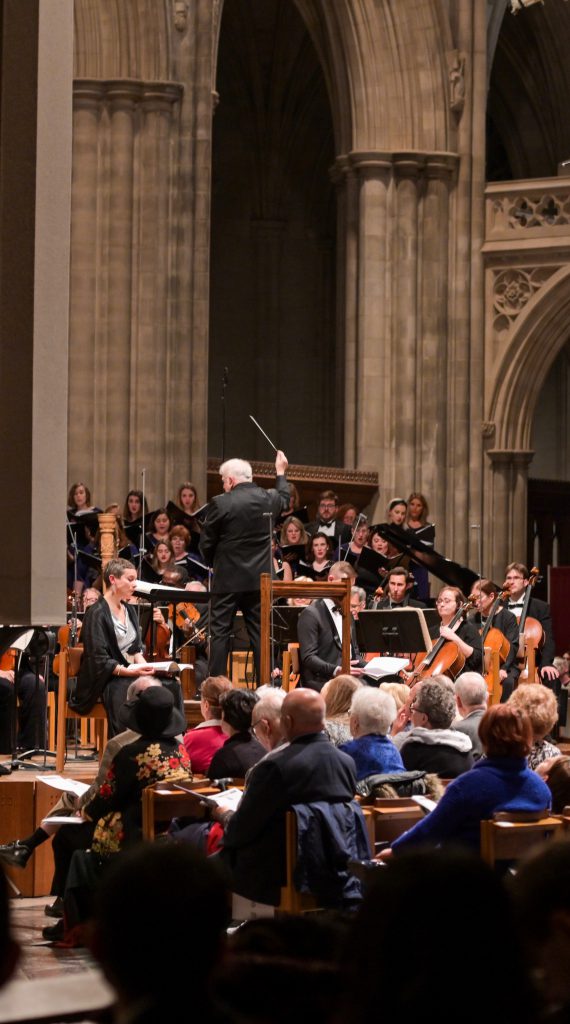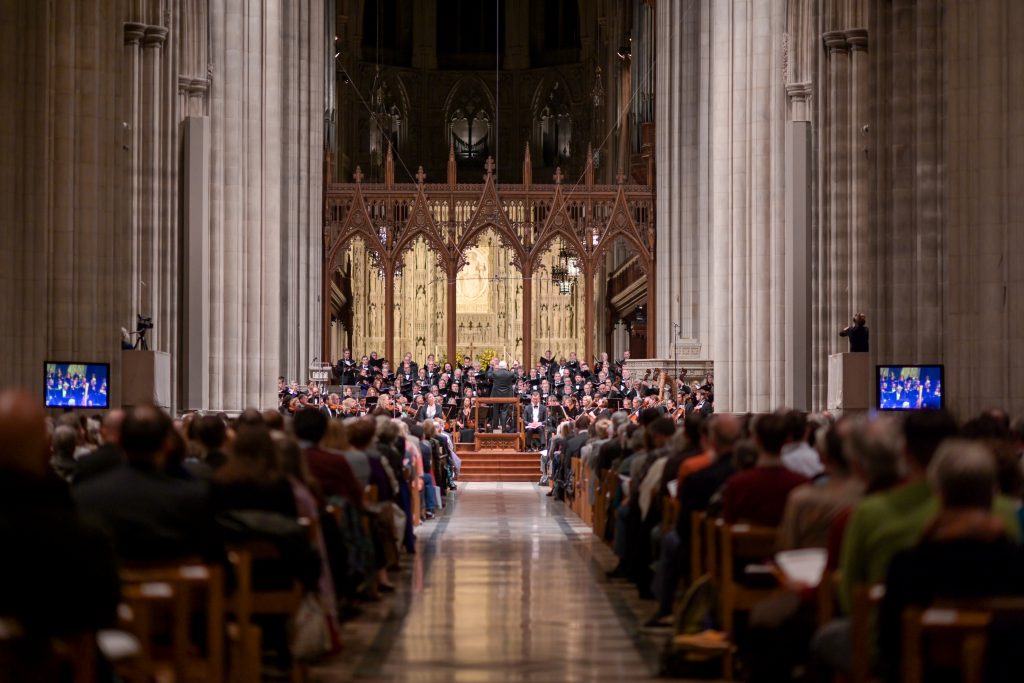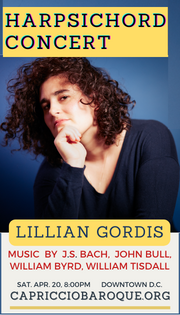Slatkin, Cathedral Choral forces honor the Armistice with epic Russian rarity

Leonard Slatkin conducted the Cathedral Choral Society and guest ensembles in Alexander Kastalsky’s “Commemoration for Fallen Brothers” Sunday at Washington National Cathedral. Photo: Paul B. Jones
The centenary of the Armistice ending World War I is fast approaching, and with it many musical celebrations to come.
The Cathedral Choral Society got an early start on the remembrances on Sunday, by performing an expanded version of Commemoration for Fallen Brothers by Alexander Kastalsky. The darkened crossing of Washington National Cathedral teemed with musicians from several ensembles for this solemn and moving concert, reunited under former National Symphony Orchestra music director Leonard Slatkin after their initial performance of the work earlier this month in Kansas City.
The Russian composer conceived of this large choral piece in the midst of the Great War, as a polyglot liturgical work that would weave together melodies and texts from many religious traditions according to the order of the Catholic Requiem. Realizing it would likely never see a performance in church, Kastalsky adapted the work for the concert hall, premiering it in St. Petersburg in 1917, almost a half-century before Britten’s War Requiem. As other countries joined the Allied Forces, including the United States, Kastalsky added movements representing their musical traditions, heard for the first time in these performances.
The Orchestra of St. Luke’s provided the instrumental parts capably, all led with consummate precision by Slatkin, who coordinated a dizzying range of moving parts in this complex score. Steven Fox, who officially takes the reins of the Cathedral Choral Society as its new music director this season, has been connected with the project for some time but did not conduct this concert. Fox had recorded Kastalsky’s revision of parts of this piece, intended for unaccompanied choir in an Orthodox service, with his other ensemble, the Clarion Choir (Naxos). That group, along with the Kansas City Chorale and the Chamber Choir of St. Tikhon’s Monastery in Pennsylvania, formed the choral forces here with the CCS.
Confidently coordinated by Slatkin, the amassed choirs made surprisingly subtle sounds throughout this diverting score, with its hints of Rimsky-Korsakov, Saint-Saëns, and Fauré. The women’s voices merged into an austere unison in the opening movement, floating over the lush tonal fabric beneath them. The lower female voices pleaded for mercy in soft harmonies during the “Kyrie eleison” section, with the Greek text jumbled together in a Babel-like confusion with Russian and English.

Photo: Paul B. Jones
Kastalsky repeatedly surprises the listener, putting Serbian or Russian or English melodies with Latin texts, while in other places setting Gregorian melodies like the Dies Irae to unassociated texts from other traditions. The listener has the sense of hearing an entire world of many peoples and faiths crying out in lamentation, a chaotic tussle given clarity by Slatkin’s direction. The musical style is just as diverse, ranging from full-throated shouts to glowing halos of sound, even evoking Japanese and Indian music in the two added interludes. The American movement, juxtaposing the hymn Rock of Ages with the funeral march from Chopin’s Piano Sonata No. 2, is one of the odder moments.
The Commemoration does not include much for its two soloists, but both made crucial contributions to the performance. Joseph Charles Beutel’s puissant bass-baritone thundered angrily in the opening movement, a sort of prophetic call to arms. Even more impressive was the powerful but also subtly shaded soprano voice of Anna Dennis, angelic and maternal in equal parts in the gorgeous movements given to her.
The Orchestra of St. Luke’s provided a carefully scaled accompaniment to both soloists and choirs, with especially adroit playing from the harp and martial trumpets, which often seemed to echo from the distance in bugle calls of different armies. Kastalsky availed himself of a colorful palette of percussion, including perhaps an over-reliance on the glockenspiel for large climaxes. The only shortcoming in this performance was occasional difficulty adjusting intonation to the organ, particularly in exposed passages featuring woodwinds.
Kastalsky may not be a household name in the United States, but he was the leading composer of Russian sacred music in the early 20th century. Kastalsky’s reputation as an authority on historical chant led Rachmaninoff, for example, to seek his help in locating Orthodox chant melodies when composing his All-Night Vigil. After the Russian Revolution, Kastalsky switched his emphasis from religious chant to folk music.
Scholar Richard Taruskin describes Kastalsky as “unquestionably the greatest and most creative connoisseur of Russian folk polyphony that ever was.” At the very least the vivid tapestry of chant and folk music sounds in this wide-ranging work may send listeners on a mission to investigate more of Kastalsky’s music.







